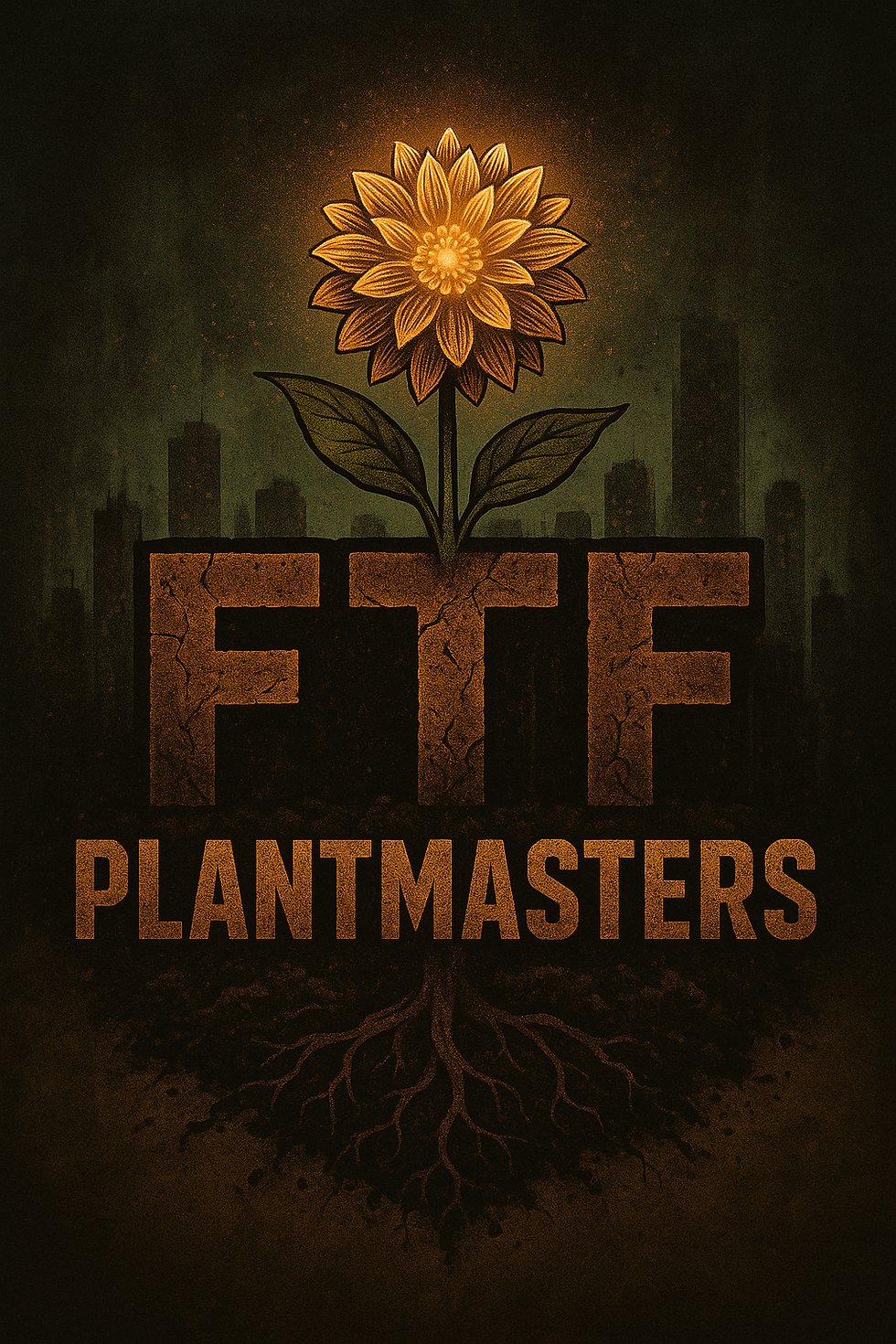🌱 FTF PlantMasters Porch Grow Guide:
- facethyfear

- Jun 5
- 3 min read

How to Grow Okra & Bell Peppers in Savannah, GA (Zone 8b)
Beginner-Friendly. Screened Porch–Approved.
By Malcolm Pannell, Founder of FaceThyFear
“Grow through what you go through.”

🪴 Seedlings You’ve Got:
Clemson Spineless Okra (6-cell tray)
Sweet Bell Peppers (6-cell tray)
You don’t need a full backyard to grow food — just some sunlight, consistency, and the willingness to care for something every day. This guide is designed for beginners living in Savannah, GA (Zone 8b) with access to a screened porch or patio.
🌤️ Can I Grow These on a Screened Porch?
Yes — but only if there’s strong sunlight. Both okra and peppers need 6 to 8 hours of direct sun per day. If your screened porch faces south or southwest, and sunlight shines through the screen most of the day, you’re good. If the area is too shaded, move the plants outside during the day or set up a grow light to support healthy growth.
🌿 Clemson Spineless Okra
The heat-loving, drought-tolerant Southern classic.
How to Transplant:
Move each seedling into a 1 to 3-gallon pot with drainage holes.
Use well-draining potting soil mixed with compost.
You can also transplant them to the ground or a raised bed, spacing them 12 to 18 inches apart.
Light Requirements:
Must have 6+ hours of full sun daily. Less light = stunted plants.
Watering Tips:
Water deeply every 2 to 3 days, allowing the top inch of soil to dry in between.
Avoid overwatering — okra is drought-resistant and doesn’t like soggy roots.
Feeding:
Fertilizer is optional but helpful. Use a balanced 10-10-10 fertilizer once a month or fish emulsion every 2 weeks.
Don’t overfeed — it can reduce your yield.
Harvesting:
Pick okra pods when they are 2 to 4 inches long — younger pods are more tender.
Harvest daily once they start coming in. The more you pick, the more they grow.
Watch For:
Aphids, whiteflies, or spider mites — treat with neem oil or soapy water.
Droopy leaves could mean under-watering or bad drainage.
🫑 Sweet Bell Peppers
More sensitive than okra, but worth the patience.
How to Transplant:
Move each pepper plant into a 3 to 5-gallon container.
Use rich, well-draining potting mix with compost added.
Stake or cage your pepper plants early — they can get tall and heavy with fruit.
Light Requirements:
Needs at least 8 hours of sun daily.
Pale leaves, slow growth, or no flowers = not enough sunlight.
Watering Tips:
Keep the soil consistently moist, but not soaked.
Inconsistent watering can cause blossom-end rot, a black patch on the bottom of the fruit.
Feeding:
Use a balanced fertilizer (10-10-10) while the plant is young.
Once fruit starts forming, switch to a low-nitrogen fertilizer like 5-10-10.
You can also use compost tea or organic blends.
Pepper Care:
Pinch off the first few flowers until the plant is 12–16 inches tall.
Once mature, allow peppers to ripen on the plant for better flavor.
Watch For:
Blossom-end rot (caused by inconsistent watering or low calcium).
Curled leaves could be pests, too much wind, or lack of nutrients — treat with neem or compost feed.
🗓️ Grow Timeline (Savannah Zone 8b)
Transplant seedlings between late March and early June.
Okra starts producing in early summer and goes strong through October.
Peppers will flower and set fruit by midsummer. Expect harvests from July through October depending on when you transplant.
🧰 What You’ll Need:
Pots with drainage (1–5 gallon range depending on the plant)
Quality soil or compost blend
Watering can or hose
Stakes or tomato cages (for peppers)
Neem oil or mild insecticidal soap
Optional: Grow light for shaded porches
✊ The FTF Message
This ain’t just about plants. It’s about reclaiming your power, even if it starts with a seed. FTF PlantMasters is here to show you that you can grow through anything, one sprout at a time. You’ve already faced the storm — now it’s time to plant something and watch it rise.
If you’re growing on a porch, in a backyard, or even in a rehab center — tag us and show your journey:
@facethyfear | #FTFPlantMasters





Comments